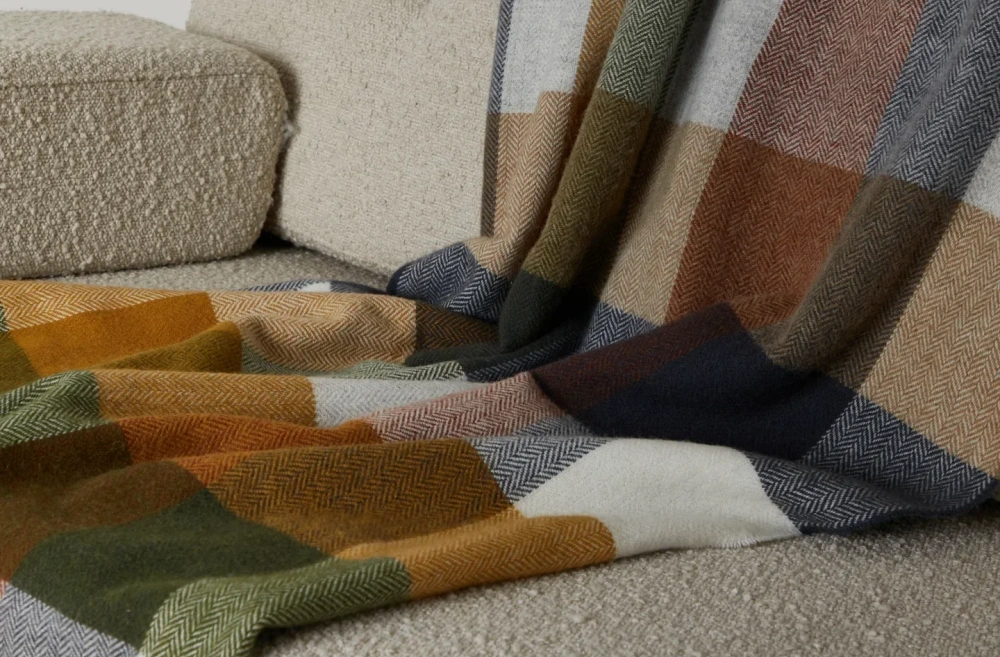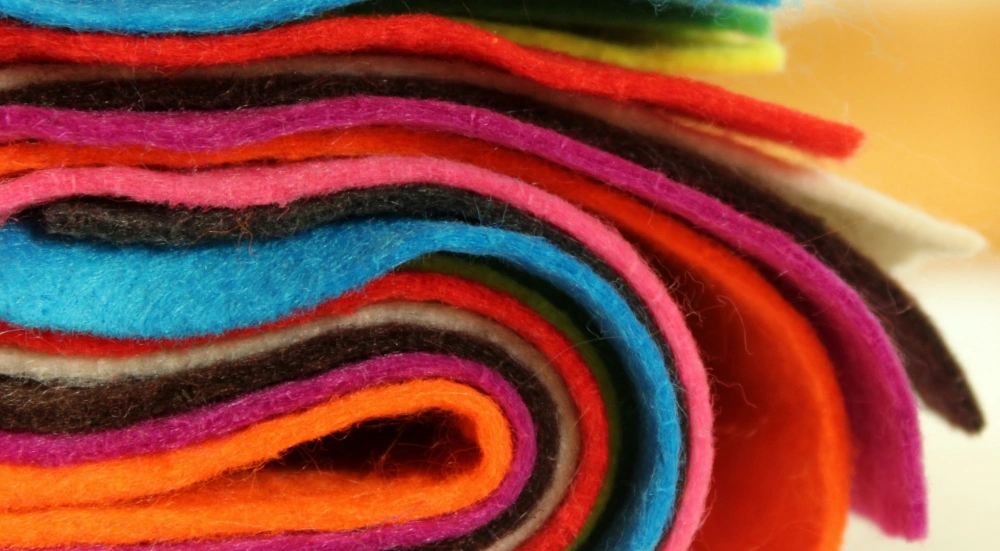What are the uses of wool fabric? From luxurious clothing to durable home goods, wool fabric is known for its versatility and timeless appeal. It has been a staple in various industries for centuries, prized for its natural properties like warmth, breathability, and moisture-wicking abilities.
Whether you’re looking to create a cozy sweater or a sophisticated rug, wool fabric offers a wide range of applications to suit your needs.
In this article, we’ll explore the top 15 uses of wool fabric, highlighting how it plays a crucial role in everyday life. Understanding its many benefits will help you appreciate why wool remains such a popular choice in quilting, fashion, home décor, and even in industrial settings.
Let’s dive into the diverse and sustainable uses of wool fabric, from its role in creating stylish garments to its unique contributions in the eco-conscious world.
Top 15 Uses of Wool Fabric
1. Wool for Clothing: A Timeless Fabric

Wool is the go-to fabric for clothing due to its natural insulation and breathability. It helps regulate temperature, keeping you warm in winter and cool in summer. You’ll find wool in everyday pieces like sweaters, suits, coats, and scarves. Wool’s moisture-wicking abilities and durability make it a comfortable choice that lasts season after season, offering both style and performance in every wear.
2. Wool in Outerwear and Winter Wear
Wool is perfect for outerwear, like coats and jackets, because it provides warmth without the bulk. Wool garments retain heat while allowing your skin to breathe. For gloves, hats, and scarves, wool’s lightweight nature doesn’t compromise its insulating properties.
Compared to synthetic fabrics, wool is more wind-resistant, moisture-resistant, and naturally regulates thermal conditions, keeping you comfortable during harsh winter weather.
3. Wool for Upholstery Fabric
When it comes to furniture upholstery, wool is a top choice. It combines durability with softness, making it ideal for high-use areas like sofas and chairs. Wool enhances the look and feel of your furniture, offering a luxurious texture that complements any home décor. Additionally, wool is biodegradable and renewable, making it an eco-friendly option that stands up to daily wear and tear.
4. Wool for Carpets and Rugs
Wool’s natural strength and resilience make it the perfect material for carpets and rugs, especially in high-traffic areas. It’s resistant to dirt and stains, helping your rugs look pristine longer. Because it’s a sustainable and non-toxic material, wool offers a safe alternative to synthetic fibers in your home. Plus, the ability to weave intricate patterns and textures adds an elegant, custom touch to any space.
5. Wool Blankets and Throws

Wool blankets are a must-have for chilly nights, thanks to their incredible insulating properties. The softness and warmth of wool against your skin provide ultimate comfort, making wool throws a cozy luxury for any home.
Unlike synthetic alternatives, wool is naturally durable and long-lasting, meaning your wool blanket will keep you warm for many years, often becoming a family heirloom passed down through generations.
6. Wool for Activewear and Sportswear
Wool excels in activewear because of its moisture-wicking ability, keeping you dry even during intense workouts. Its breathability helps regulate your body temperature, so whether it’s hot or cold, wool keeps you comfortable.
Wool’s natural stretch also allows for maximum movement. Popular activewear items made from wool include base layers, hiking socks, and running apparel. It’s perfect for long hikes, sports, and cold-weather activities.
7. Wool for Baby Products
Wool is gentle on sensitive baby skin. Baby blankets and sleepwear made from wool are soft, non-irritating, and thermoregulating, which means they help keep babies warm but not too hot.
Wool’s hypoallergenic properties make it an excellent choice for babies with allergies or eczema. As a sustainable and eco-friendly fabric, wool is a safe and natural option for baby essentials, offering both comfort and peace of mind for parents.
8. Wool in Bedding: Pillows, Mattress Pads, and Comforters
Wool enhances your sleep experience by regulating temperature. Wool bedding, such as pillows, mattress pads, and comforters, keeps you cozy during winter but cool in summer.
Wool’s naturally antimicrobial properties ensure a cleaner, healthier sleep environment. It’s also dust mite resistant, making it ideal for people with allergies. Not only is wool bedding comfortable, but it’s also a long-lasting investment that will serve you for many years.
9. Wool in Fashion Accessories
Wool is a popular fabric choice for fashion accessories due to its warmth, style, and versatility. Wool scarves, hats, and gloves are staples in colder weather, offering both comfort and chic style.
Wool bags and wallets are durable and add a sophisticated touch to any outfit. As eco-conscious fashion continues to grow, wool accessories are becoming increasingly popular due to their sustainable, natural origin and timeless appeal.
10. Wool Felt for Crafting and DIY Projects

Wool felt is a fantastic material for crafting and DIY projects. It’s easy to cut, sew, and mold, making it ideal for a wide range of creative endeavors. Whether you’re making home décor items, toys, or ornaments, wool felt offers durability and a rich texture.
It’s also great for making accessories like handbags, keychains, and embroidered designs. Crafters love it for its versatility and ease of use in creating high-quality projects.
11. Wool in Mattress Manufacturing
Wool plays a key role in creating natural, breathable mattresses. As a filling, wool offers excellent breathability, helping maintain a comfortable temperature throughout the night.
It provides natural support and cushioning, keeping your mattress firm yet comfortable. Wool’s durability ensures that your mattress stays in great condition for years, offering long-term comfort and support for a restful night’s sleep.
12. Wool for Insulation in Construction
Wool’s insulating properties make it a fantastic choice for eco-friendly construction. Its natural fibers trap air, providing excellent thermal insulation, which helps keep buildings warm in winter and cool in summer.
Wool also serves as a soundproofing material, reducing noise in both residential and commercial buildings. As a renewable, biodegradable material, wool is an ideal choice for green building projects and sustainable architecture.
13. Wool in Automotive and Interior Design
Wool fabric is often used for car upholstery due to its luxurious feel and durability. Wool seats provide comfort while also enhancing the aesthetic of your car’s interior. It stands up well to wear and pressure, making it a great choice for high-traffic areas.
Wool’s natural look adds a premium touch to your vehicle, blending comfort and style seamlessly. Its resilience also ensures that your upholstery lasts longer and maintains its beauty over time.
14. Wool as a Natural Dye
Wool is an excellent base for natural dyeing. Whether you want rich, vibrant colors or more muted tones, wool’s natural absorbency makes it ideal for plant-based dyes. Using wool as a natural dye ensures sustainability, offering a chemical-free alternative to synthetic dyes.
Wool dyeing is popular among crafters, textile artists, and designers who want unique, eco-friendly fabrics for their projects, including yarn and fabric used in knitting and sewing.
15. Wool in Filtration Systems
\Wool is an effective natural filtration material, used to filter both air and water. Its unique fiber structure allows it to trap particles while letting air or water flow through, providing natural filtration. Wool filters are biodegradable, making them an eco-friendly option for improving air and water quality.
This sustainable use of wool helps reduce the environmental impact of traditional filtration materials, and it’s commonly found in air purifiers, water filters, and eco-friendly filtration products.
Conclusion
Wool fabric continues to prove its exceptional versatility, making it a top choice for a wide range of applications. From everyday clothing and stylish accessories to eco-friendly insulation and unique crafting materials, wool offers undeniable benefits.
Its natural properties, like breathability, durability, and temperature regulation, make it ideal for both practical and creative uses. Whether you’re layering up for the winter or designing a cozy quilt, wool never disappoints.
Now that you know the many uses of wool fabric, why not take your quilting projects to the next level? Explore the rich textures and quality of wool fabric for quilting from Fanda. Get inspired and start creating your masterpiece today!
FAQ
Types of Wool Fabric
Wool fabric comes in several types, each offering unique benefits. You may encounter worsted wool, a smooth, tightly woven fabric perfect for suits and formal wear. Woolen wool has a softer, fluffier texture, commonly used for coats and outerwear. There are also blends, such as wool-silk or wool-cashmere, which combine wool’s warmth with the softness of other fibers. Lastly, felted wool has a dense, compressed texture, making it ideal for crafting and upholstery.
What Does Wool Fabric Look Like?
Wool fabric typically has a smooth or slightly textured finish, depending on the type. Worsted wool has a sleek, polished surface, while woolen wool has a fuzzier, more textured look. You’ll often see wool fabrics in solid colors, herringbone patterns, or checks. The fabric may appear thicker or thinner, depending on its weave and weight. Wool is also known for its natural elasticity, giving it a bit of stretch when you move.
What is Felted Wool Fabric?
Felted wool is made by compressing wool fibers through heat, moisture, and agitation. The process makes the fabric dense, thick, and durable, yet soft to the touch. This type of wool has minimal fraying edges, which makes it excellent for crafting, DIY projects, and even some types of clothing like coats or hats. Felted wool is often used in home décor projects like pillows and blankets as it adds texture and warmth.
How to Make Wool Fabric?
Making wool fabric starts with collecting raw wool from sheep. Here’s how you can make it into fabric:
Shearing: The wool is harvested from sheep.
Cleaning: The wool is cleaned to remove dirt and grease.
Carding: Wool fibers are brushed and aligned into sheets.
Spinning: The wool is spun into yarn.
Weaving: The yarn is woven together to create fabric.
How Much Does Wool Fabric Cost?
The price of wool fabric can vary based on quality, origin, and type. Generally, pure wool fabric can cost anywhere from $10 to $40 per yard. Wool blends (like wool-cotton or wool-polyester) tend to be more affordable, ranging from $5 to $15 per yard. Specialty wool fabrics, such as cashmere blends or wool silk, can reach $50 or more per yard. For quilting, you can expect to pay around $12 to $20 per yard for high-quality quilting wool.
Properties of Wool Fabric
Wool fabric boasts several excellent properties:
Insulation: Wool traps air within its fibers, keeping you warm in winter and cool in summer.
Moisture-Wicking: Wool absorbs moisture, keeping you dry even in wet conditions.
Durability: Wool is resilient and can last for years, even with regular wear.
Breathability: The fibers allow air to circulate, preventing overheating.
Elasticity: Wool naturally stretches and recovers, making it comfortable for wear.
What is Wool Melton Fabric?
Wool Melton fabric is a dense, heavy wool fabric with a smooth, felted finish. Known for its warmth and durability, this fabric is commonly used for outerwear like coats, jackets, and capes. The heavy weight of Melton wool offers great protection against wind and cold weather. It also has a luxurious texture and polished look, making it ideal for high-end fashion garments and accessories.
Can You Use Fabric Conditioner on Wool?
Yes, you can use fabric conditioner on wool, but it’s essential to choose a wool-specific conditioner. Here’s how:
Use a Wool-Friendly Conditioner: Ensure it’s designed to soften wool without damaging its natural fibers.
Don’t Overuse: Apply a small amount, as excess conditioner can leave residue.
Rinse Thoroughly: After using conditioner, rinse the fabric well to remove any leftover product.
Fabric conditioner helps maintain softness and enhance the wool’s natural properties.
